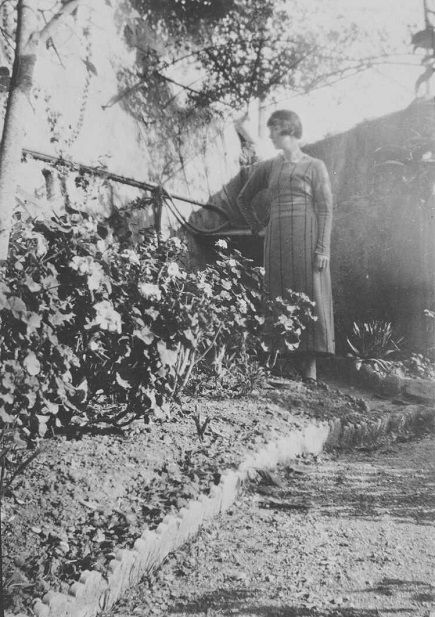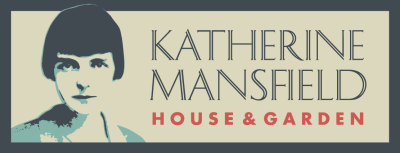A BOUQUET FOR KATHERINE MANSFIELD
- 21 September 2015
- Nicola Saker
Mansfield noticed flowers. Ever since, at the age of 10, she read her cousin Elizabeth von Arnim’s book Elizabeth and Her German Garden, she was highly conscious of their colours, shapes, scents and names.

Image: Katherine Mansfield in the garden at Villa Isola Bella, Menton, 1920. Courtesy of Alexander Turnbull Library, 1/2-011913-F.
She knew she was better at naming flowers than many people and used this in her examination of class in 'The Garden Party':
"As for the roses, you could not help feeling they understood that roses are the only flowers that impress people at garden parties; the only flowers that everybody is certain of knowing."
She also described native plants to great effect: "…a clump of toi toi waving in the wind, and looking for all the world like a family of little girls drying their hair" (Katherine Mansfield Notebooks, Volume 1). And this, from 'In the Botanical Gardens':
"…and above the hedge a long row of cabbage trees. I stare up at them, and suddenly the green hedge is a stave, and the cabbage trees, now high, now low, have become an arrangement of notes – a curious, pattering native melody."
A garden requires constancy and time, neither of which Mansfield had in large doses. A woman who has 26 addresses in two years could never be a gardener – but her love of flowers and gardens could be fully expressed at Garsington, the manor house of Lady Ottoline Morrell. A little known painting by Mansfield's friend Dorothy Brett of a garden party at Garsington has Mansfield and her husband John Middleton Murry, a little distant from the central group, under pink and blue garden umbrellas.
-manchester-art-gallery.jpg?202004030133)
Image: Umbrellas by Dorothy Brett, 1917. Courtesy of Manchester Art Gallery.
A visit to Garsington during the summer of 1917 offers us the vision of Katherine and Ottoline cutting lavender, sweet geranium, verbena, rose leaves and rosemary to make pot-pourri. The hot, sunny days and warm nights meant the scent of flowers blew in through open windows.
It inspired her to develop a story idea. "Who," she asks in a letter to Ottoline (15 August 1917), "is going to write about that flower garden? It might be so wonderful – do you see how I mean? There would be people walking in the garden – several pairs of people – their conversation their slow pacing – their glances as they pass one another – the pauses as flowers ‘come in’ as it were – as a bright dazzle, an exquisite haunting scent, a shape so formal and fine, so much a flower of the mind…A kind of, musically speaking – conversation set to flowers."
Katherine conveyed this story idea to Virginia Woolf, who appears to have promptly taken it and produced her story 'Kew Gardens'.
The most famous portrait of Mansfield, by Anne Estelle Rice, has as its background a lush riot of flowers and a vase of flowers is depicted on the table next to her. She recalled of the sitting: "Anne came early and began the great painting - me in that brick red frock with flowers everywhere ..."
On Mansfield’s grave is a quote from Shakespeare’s Henry IV: "...but I tell you, my lord fool, out of this nettle, danger, we pluck this flower, safety."
If only she had.

Image: Katherine Mansfield's grave at Avon-Fontainebleau, c.1940. The Shakespeare quote is inscribed on the horizontal plane under Mansfield's birth and death years. Courtesy of the Alexander Turnbull Library, PAColl-5302-4.
